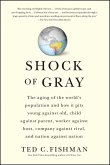In "Darwinism and Race Progress," John Berry Haycraft delves into the intricate interplay between Darwinian theory and the socio-political constructs surrounding race in the early 20th century. With a nuanced literary style that melds philosophical inquiry with scientific discourse, Haycraft critiques the misappropriation of Darwin's ideas to justify racial hierarchies. The book situates itself within the broader context of evolutionary thought, offering a rigorous examination of how biological determinism influenced societal views on race and progress. By articulating the latent dangers of applying Darwinism in racial contexts, Haycraft prompts readers to reflect on the ethical implications of scientific interpretation. John Berry Haycraft, an influential thinker and writer of his time, was profoundly engaged in the debates surrounding anthropology and social theory. He was deeply concerned with the moral complexities of evolution and race, having observed the ramifications of scientific misinterpretation during the height of eugenics and social Darwinism. Haycraft's extensive background in natural history and his passion for human rights and social justice provided a solid foundation for his critical analysis in this pioneering work. "Darwinism and Race Progress" is a crucial read for anyone interested in the intersections of science, ethics, and society. Haycraft's insightful arguments and thoughtful prose encourage readers to question prevailing narratives about race and progress, making it essential for students, scholars, and anyone concerned with the historical impacts of scientific theories on societal structures.
Dieser Download kann aus rechtlichen Gründen nur mit Rechnungsadresse in A, B, BG, CY, CZ, D, DK, EW, E, FIN, F, GR, H, IRL, I, LT, L, LR, M, NL, PL, P, R, S, SLO, SK ausgeliefert werden.









